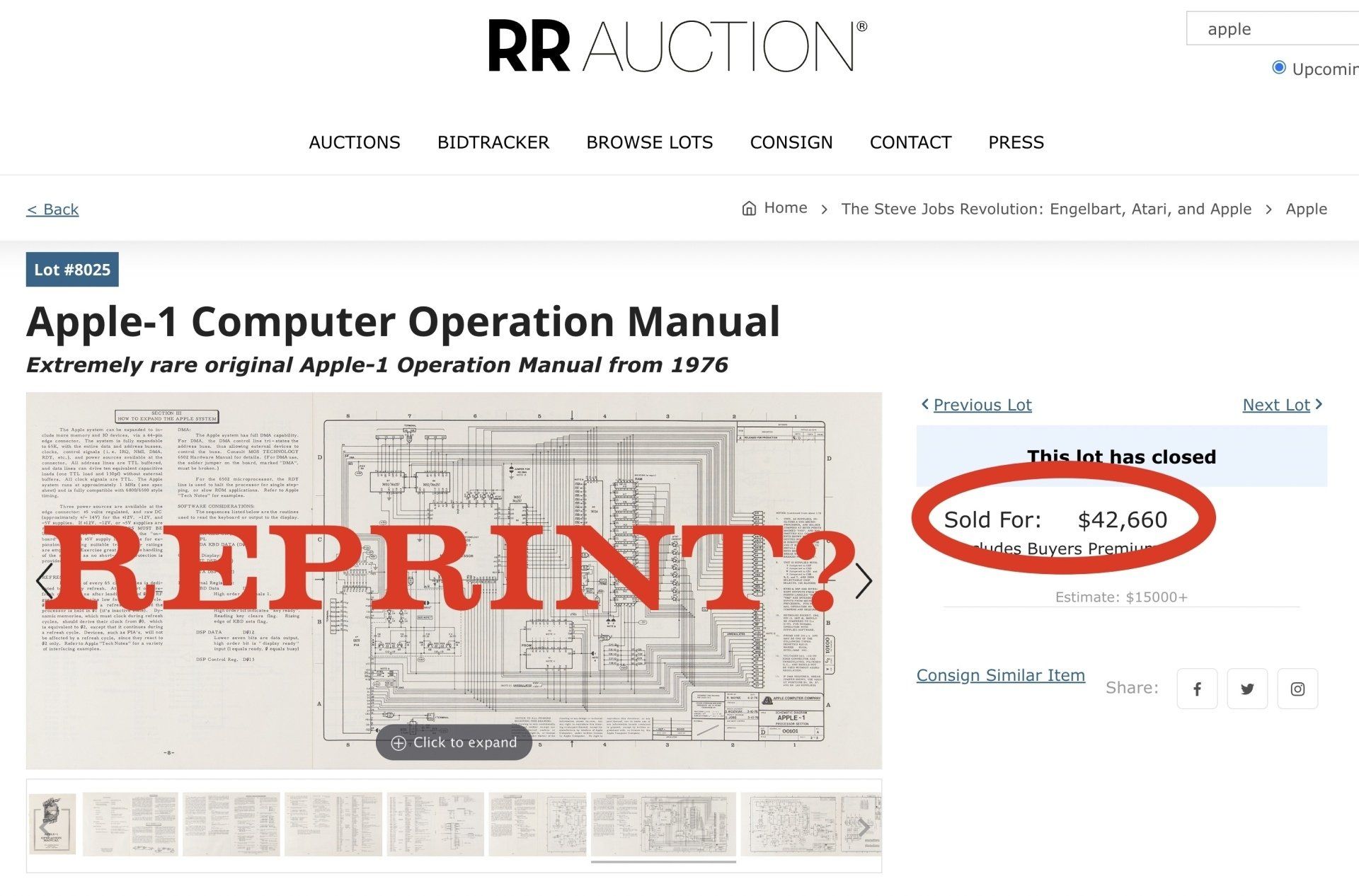Re-Creating the Apple-1 Manuals
Re-Creating the Apple-1 Manuals
A few months ago, in March 2021, I started selling self-made acrylic cases for the KIM-1 on eBay. In case you don't know: The KIM-1 was one of the very first single board computer used by chip manufacturer MOS Technology to showcase their newest processor, the 6502. The computer came without power supply and without case. So the ones sold on Ebay come without a case most of the time, too, of course. I bought a KIM-1 in December 2020 and – because no case with that machine either – I decided to design a case on may own.
Once it was finished, I was pretty pleased with it and thought that other KIM-1 owners might want to purchase them. So I produced a few more cases and offered the acrylic KIM-1 cases on Ebay.
One of the buyers asked me whether I had a case for the Apple-1, too. I had not. Like the KIM-1, the Apple-1 was sold bare naked most of the time, although a wooden case was later available. During my research of the measurements and positions of the mounting holes of the Apple-1, I came across reprints of the original Apple-1 manuals. I dug a bit deeper and realized that all of those (pretty ugly) reprints – usually cheap laser printer copies – originated from the same poor quality scan.
In a first attempt to make better quality reprints, I took the scans, enhanced them and had them printed by a professional printer, saddle stichted, nice paper – the usual things. And while the result had been far better than the stuff that some people are still selling on ebay, I was not really happy: It started with the wrong format (DIN A4 instead of US Letter), frayed letters (because of the bad scan), pixelated schematics … yech! And the fold-out schematics were missing, too. The whole thing was unworthy of being shown, really.
Then it dawned on me: What if I recreated the whole manual from scratch in a modern DTP program like Adobe InDesign. Instead of relying on a scan, I would re-typeset the whole thing and would have a properly printable design file that ends up being a super high quality PDF to print from.
Oh boy: Had I known what path to insanity I was about to step onto, I would have thrown in the towel immediately. But back in March, I really did not think to much about how long this journey would take.
Researching the type-faces
Several steps were necessary to implement the project: First of all: I had to research all the typefaces used. And this is by far easier said than done, especially as the main copy of the manuals had been written on a typewriter (probably an IBM Electric and IBM Selectric). Usually, typefaces from typewriters made some 50 years ago have not been converted to modern computer typefaces. But thanks to the great users of typography.guru , all character sets (almost a dozen) were gradually identified.
But: Knowing the exact typefaces was merely the beginning. For the reprint to be as true to the original as possible, the position of each individual letter had to be accurate down to the fraction of a millimeter, of course. Without that precision, I simply could have typed the manuals copy and disregard the design specifics completely. That, of course, was absolutely out of question. If I did this, it would have to be as close to the real thing as humanly possible.
I think it was then when I wondered whether I had lost my marbles…
I have created a little time-lapse video in which you see the painstaking process of positioning each and every single character of the manual to its original position.
Now: If you thought that
was hard, you ain't seen nothing yet. The absolute worst part was re-drawing the schematics that had been drawn originally with a leroy set (or something similar). Which means: Ronald G. Wayne
(the third Apple founder and designer of the Operation Manual), drew every character by hand, which makes finding a typeface particularly difficult, too.
But finally, after more than 100 hours of work, all manuals had been re-created: The "Apple-1 Operation Manual", the "Preliminary Basic Users Manual" and the instructions for the "Apple-1 Cassette Interface ".
The rest was rather simple: Finding a printer that was able to give a decent quote on a small print run of the manuals keeping in mind that a 6-page-gatefold was needed to re-create the fold-out schematics.
The Byte Shop logo stamp
There was one more thing missing, though. During my research I found pictures of original manuals that had the stamp of the Byte Shop stamped on their cover. I had come so far, so I decided to give it a go and try to get permission to re-create the stamp, too (as I did not want to have it printed on the cover but manually stamped).
Against all hopes, I have managed to track down Paul Terrell, the founder and owner of the Byte Shop from 50 years ago. I reached out to him and told him the story you just have read. Here is what he replied:
Armin,
When I received that email I had tears in my eyes.
So, that's the story behind this website and the recreation of the Apple-1 manuals. I hope you liked the little read and – in case you purchase the Apple-1 manuals – enjoy them as much as I did making them.
